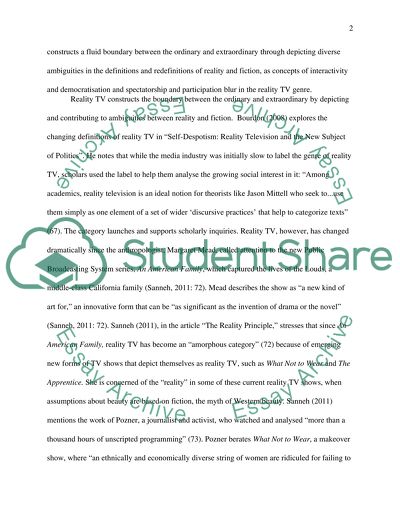Cite this document
(“Fluid Boundaries in Reality TV Essay Example | Topics and Well Written Essays - 4250 words”, n.d.)
Fluid Boundaries in Reality TV Essay Example | Topics and Well Written Essays - 4250 words. Retrieved from https://studentshare.org/visual-arts-film-studies/1620400-fluid-boundaries-in-reality-tv
Fluid Boundaries in Reality TV Essay Example | Topics and Well Written Essays - 4250 words. Retrieved from https://studentshare.org/visual-arts-film-studies/1620400-fluid-boundaries-in-reality-tv
(Fluid Boundaries in Reality TV Essay Example | Topics and Well Written Essays - 4250 Words)
Fluid Boundaries in Reality TV Essay Example | Topics and Well Written Essays - 4250 Words. https://studentshare.org/visual-arts-film-studies/1620400-fluid-boundaries-in-reality-tv.
Fluid Boundaries in Reality TV Essay Example | Topics and Well Written Essays - 4250 Words. https://studentshare.org/visual-arts-film-studies/1620400-fluid-boundaries-in-reality-tv.
“Fluid Boundaries in Reality TV Essay Example | Topics and Well Written Essays - 4250 Words”, n.d. https://studentshare.org/visual-arts-film-studies/1620400-fluid-boundaries-in-reality-tv.


